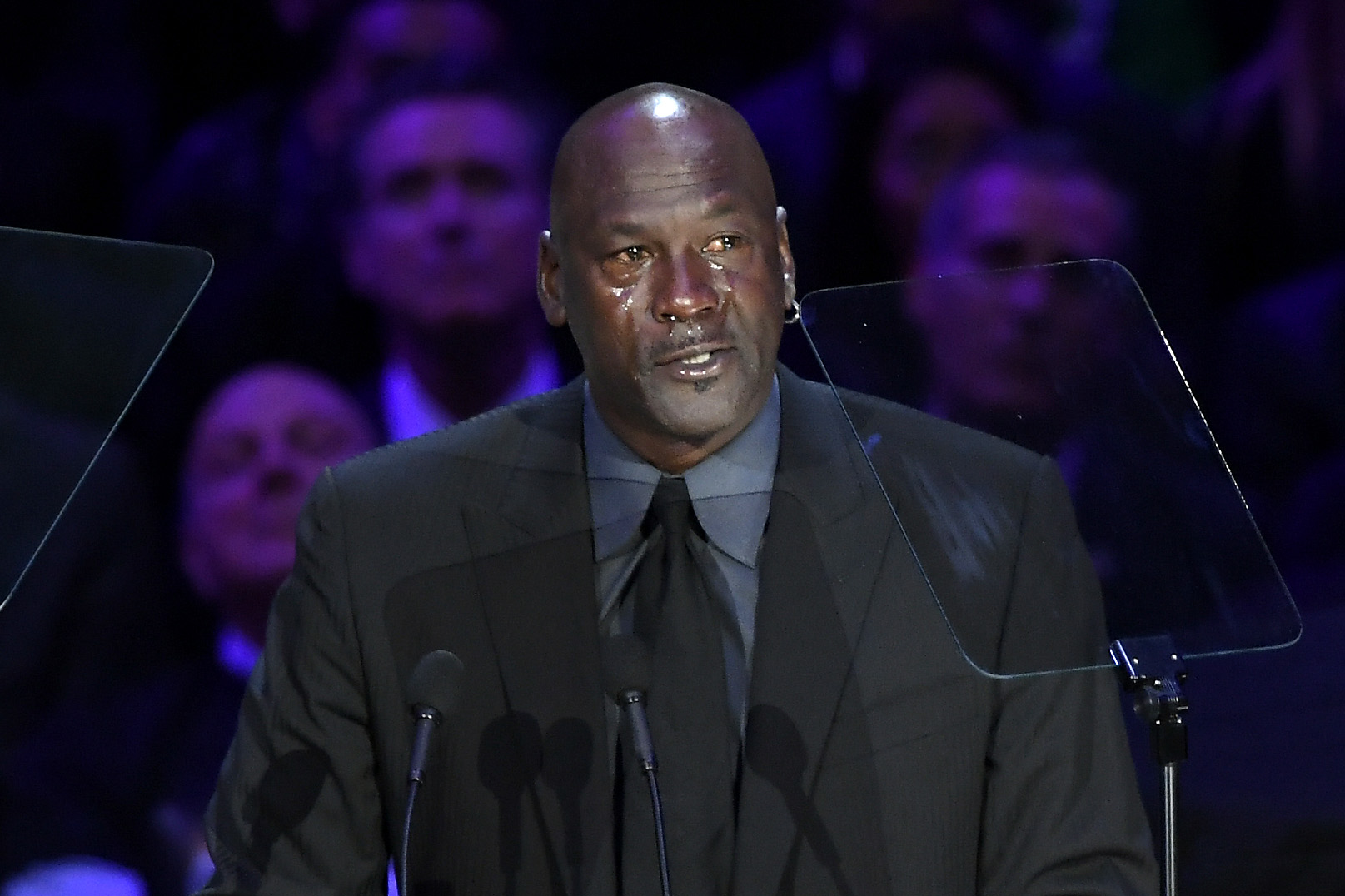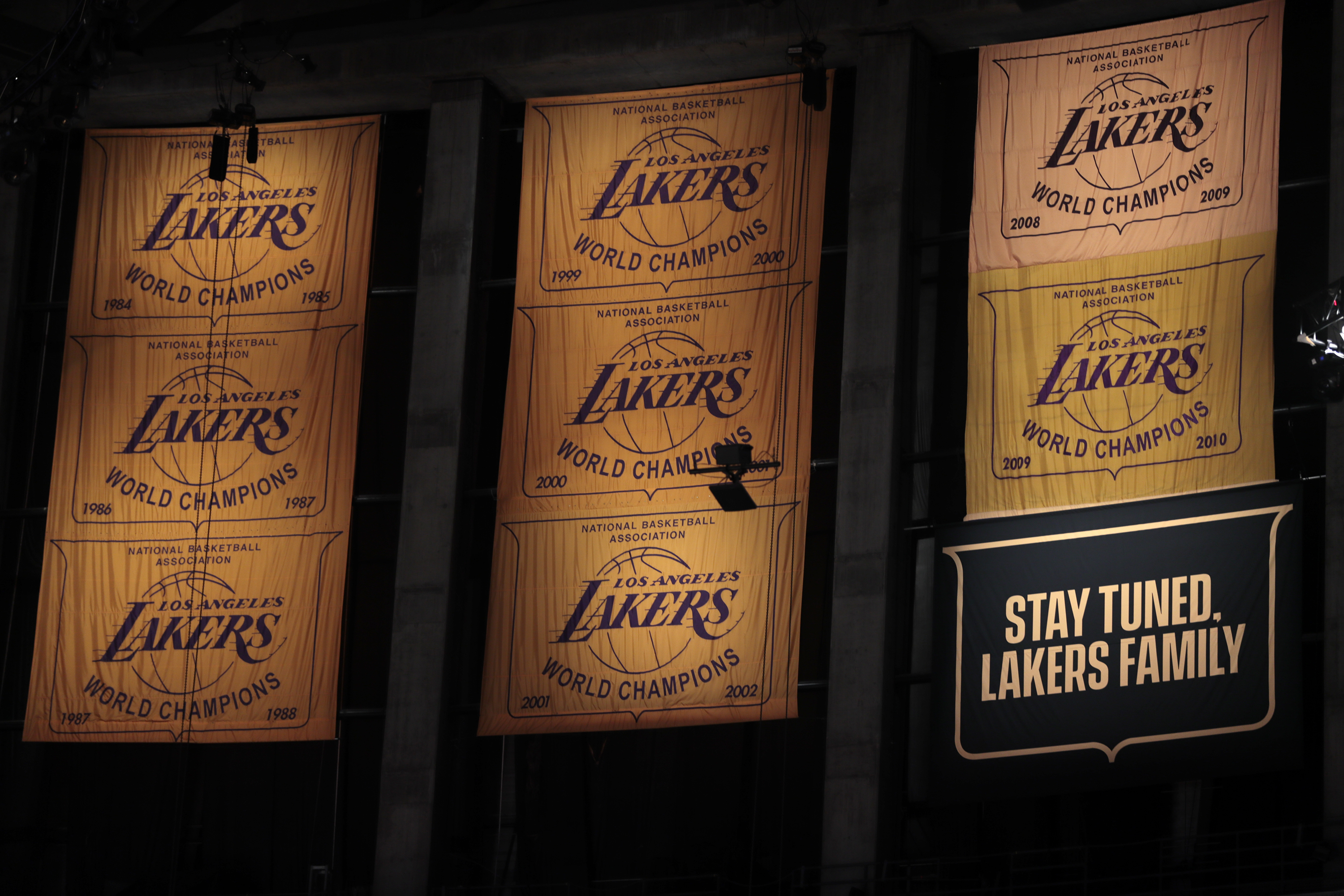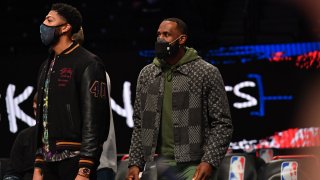
"The Brow" is back!
Well not quite, but he is close to returning to the court.
The Los Angeles Lakers announced on Thursday that All-Star forward Anthony Davis has been cleared by medical personnel for full on-court activity.
In Layman's terms, that means that Davis can now practice fully with the Lakers. Out since February 14 with a right calf strain, Davis will likely need some time to slowly ramp back up into playing shape.
It's likely that Davis will start with some light running, three-on-three, and then progressively begin to play five-on-five in practice before ultimately returning to the court in a game sometime soon.
Get top local stories in Southern California delivered to you every morning. >Sign up for NBC LA's News Headlines newsletter.
During his pregame press conference with the media on Thursday, Lakers' head coach Frank Vogel said that Davis, "Is tired of being a patient and ready to be a player again." Vogel added that he doubts Davis will be able to return in back-to-back home games against the Utah Jazz on Saturday and Monday, but it's likely he could travel with the team to Dallas and return to the court next Thursday on April 22 against the Mavericks.
The Lakers have been ravaged with injuries this season and currently sit in fifth place in the Western Conference, just 2.5 games ahead of the Portland Trail Blazers.
While the news of Davis' eminent return certainly brings hope and optimism to the team and Lakers nation as a whole, the reigning NBA Champions are still without 2020 Finals MVP LeBron James. James, the MVP frontrunner before his injury, has been out since March 20 with a high-ankle sprain.
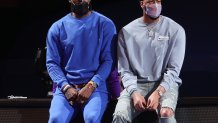
For the Lakers to defend their title this season, they're going to need both superstars healthy and at full strength to bring another championship back to Los Angeles.
Therefore, there's plenty of consternation amongst fans concerning the health of both Davis and James, and will they be able to finish the season without re-aggravating their injuries.
Recently, NBC LA sat down with Doctor Evan Jeffries, the owner of Evolving Motion Physical Therapy in Orange County, and a sports injury specialist. Jeffries broke down the current injuries suffered by both Davis and James, and provided some medical insight on not only when we might see them return to the court, but will they have any limitations when they do, and the risks of re-injury.
The full interview with Dr. Jeffries is below:
Hi Evan, thank you for joining me today for this interview. Please tell our audience a little bit about yourself and your medical specialty.
I've been a physical therapist for seven years now. I've mainly worked in orthopedics treating all sorts of sports injuries from high school to college and everyone else in between. I love to analyze injuries and the mechanisms of injuries and how to help them get back to their normal activity.
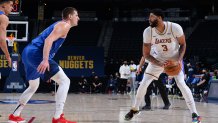
We're here today to talk about two of the Lakers superstars and their various injuries and ailments that have kept them out of the lineup now for weeks. Lets' start with Anthony Davis (AD), AD was dealing with right Achilles soreness and tendonitis throughout the season. He tried to rest it a couple times earlier in the season, but then in Denver in early February during a non-contact play, he appeared to injure his right Achilles and limped off the court. The good news is it was diagnosed as an Achilles strain. He will have been out 10 weeks next week, which is when he's expected to return. My question for you is: Is there going to be any disability or limitation when he returns?
That's the main reason he's been out 10 weeks: because of the concern with the Achilles tendon. That's the strongest tendon in the body and the connection is right in the calf, three muscles blending in with the Achilles tendon. The original injury was Achilles tendonitis, so when he strains his calf, it sets off alarms because you're worried about that Achilles tendon tearing.
Here's what we want to see when he comes back:
- He has no pain when he ramps up his activity in the calf or Achilles area.
- He's able to go through all his workouts
- He'll probably have to ramp up with a lot of activity about an hour before each game.
The timetable we were originally given for Davis was 6-8 weeks. That is the timetable, but then after that, you need a little bit more time to regain your strength in those muscles. We didn't see AD in any sort of brace or cast following that first day in Denver when he injured his Achilles. At home he's on the bench for every game and appears to be moving without a limp. He's expected to return some time next week, which will put him past the 10-week mark. Is there a fear that he won't have his strength back in the muscle when he returns, or is there a possibility of a ruptured Achilles?
Great question. Because of Kevin Durant, who had a similar injury, I think that fear gets set in everybody's mind. The reason they gave that 6-8 week timetable was because they wanted that muscle to really heal, and that's the normal timeline for the muscles to heal. Then, you want at least 2-4 weeks of normal activity to ramp up. That's increasing the load on to the calf and the connection to the Achilles tendon. So the body is understanding and now remembering what the load feels like and when you ramp it up, does it feel okay? The fear is returning too soon and rupturing the Achilles, but because they've held him out for such a long period of time, that’s the best thing they could have done, now it's all about ramping up activity and getting him ready to play in games.
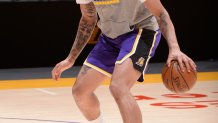
You mentioned the elephant in the room with Kevin Durant. Durant was originally diagnosed with a right-calf strain On May 8 of 2019 in the second-round against the Houston Rockets. He only took 34 days off before he returned in the NBA Finals. Could you explain the difference between what happened with Kevin Durant and what could happen with Anthony Davis by giving him the extra 5 weeks of rest and recovery?
I believe Durant had a partial tear—a grade two tear in the calf. Ultimately, if that's the case, your body needs that 6-8 weeks of healing. In sports, there's things that can accelerate the healing process, but ultimately what happens is when you have a tear in that muscle and it's not as strong as it normally would be, there's a risk of re-injury. The Achilles tendon accepts so much force from the ground that it has to be super strong. So if that calf muscle is not at its top peak form, then it will take one explosive movement, like that step back that is typically seen in Achilles tears to not be able to withstand that force, and ultimately leads to the Achilles tear. I think with Anthony Davis, the ability to take off that full 10 weeks is just so crucial for him. For right now, and the long term.
Is AD going to be limited at all?
I don't think he will be limited at all. Some of that may be initial fear maybe. Ramping up correctly will hopefully set some of that fear aside. There will definitely be a minute restriction early on when he returns.
Note: Frank Vogel confirmed this on Thursday prior to the game against the rival Boston Celtics, the first game at Staples Center this season with fans in attendance.
If AD comes back and the tendinitis and soreness returns, should they shut him down immediately? Or can he play through it?
He shouldn't have any pain associated with it. The bigger thing is that he had the Achilles tendinitis. That's another reason why they gave him so much time.
Is an Achilles tear or rupture in AD's career inevitable at this point?
No, I don't think so. You can have Achilles tendinitis and be fine and never tear your Achilles. Or you can have no underlining cause, but fatigue and overuse (like Kobe Bryant did in 2013) and it ruptures. I would say I wouldn't be fearful of that, but be aware of how it feels the first couple weeks. Is he having any pain? Any soreness? If not, he should be good to go.
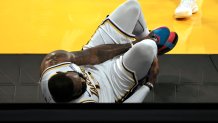
Let's shift over to LeBron James. LeBron was diagnosed with a high-ankle sprain on March 20 after Solomon Hill crashed into his right ankle. At 36 years old, he might take a little longer to recover. The original timetable was 4-6 weeks. That marks his return for end of April (six weeks). When this heals, he should be back to 100% correct?
That depends on when he comes back. It's a lot different than the Achilles. You're not worried about a tear or rupture if he returns to early. This kind of sprain is a lot different than a low-ankle sprain. It involves the two long bones in the lower leg (tibia and fibula) and the ligaments that hold those bones together. Usually people with his injury will have pain above the ankle and it makes it difficult with jumping and landing. So for LeBron, the concern will be with his pain tolerance. There should be no long term issues.
LeBron posted on Instagram that the was basically living in a hyperbaric oxygen chamber. How does the hyperbaric oxygen therapy that LeBron has been using aid in his recovery?
It helps tremendously. He's getting more oxygen, which increases the blood flow and starts healing. It also brings down the inflammation. Normally a high-ankle sprain suffered by someone in the general public would typically take about three months to recover before returning to your normal activity. In sports it can take between 6-8 weeks. Normally this is a football injury. I know he's probably had tons of mobility and insulation helping getting those ligaments to bind and stay together. That's why he was in a walking boot in the beginning.
Many NFL players like Rob Gronkowski and Saquon Barkley were able to return from a high-ankle sprain after just two or three weeks. Blake Griffin returned after 2 games in the playoffs. Is that simply because of age or the degree of the sprain?
Exactly. The grade system is grade 1-3. A "one" is just a mild sprain. A grade 2 is a partial tear of the ligaments and a grade 3 is a full tear of the ligaments. LeBron is probably a Grade 2 if I had to guess. So that timeline he's at is pretty appropriate. Things can be upped a little bit, like if this was the playoffs, but at this point in the regular season it's not necessary.
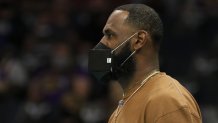
LeBron did not travel initially or come to the home games, but, after 2-3 weeks, he travelled with the team on their east coast road trip. Is that a good sign that he's on a good path?
Yeah, it's definitely a good sign. He's probably able to get some work in with the team.
We were discussing the ramp up time with AD, how much ramp up time will be necessary for LeBron? I would imagine it's less than AD needs? What does that look like?
It will look a little different. His ramp up will first involve running, probably on a body-weight support treadmill or in a pool. Then he probably could do some on-court running and activity. He'll probably wear a different kind of ankle brace now, and for the remainder of the season.

